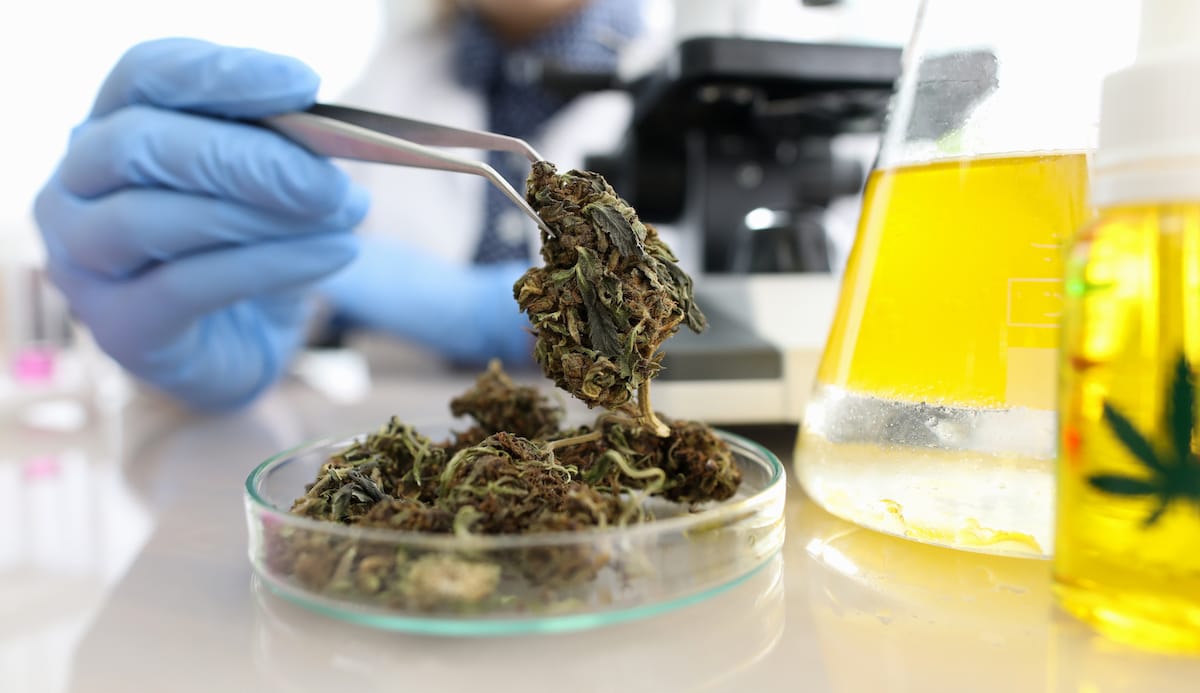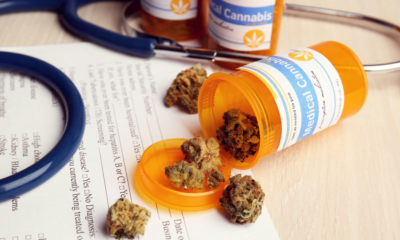Plant doctor and cannabis expert, Dr Callie Seaman answers some of the common questions about medical cannabis and explains how pharmaceutical products differ from those found in the related wellness industry.
Earlier this year, Dr Callie Seaman, director of UK hydroponics company, Aqualabs, took a trip to Denmark to visit the licensed research and development medical cannabis cultivation facility, Cannabis Pharm.
Over the last couple of years she has been working with the facility to optimise their growing process and study the secondary metabolite production.

Dr Callie Seaman
After talking with many parents and patients Dr Seaman realised that many did not know how their medicines were produced.
At the end of last year the team at Aqualabs produced a film for Medical Cannabis Awareness Week to highlight the process of cannabis cultivation and extraction.
Here Dr Seaman answers some of the most common questions about medical cannabis and where it comes from.
What are Terpenoids, Flavonoids and Cannabinoids?
Terpenoids are a class of organic chemicals that include cannabinoids and terpenes. Terpenes are aromatic, volatile compounds that create the smell and flavour of plants but also have medicinal qualities. Cannabinoids are more widely known about secondary metabolite within cannabis. They include THC, CBD, CBN and many others. Phytocannabinoids are found within plants; they mimic endocannabinoids that are produced within the human body such as Anandamide and 2AG (2-Arachidonoyl Glycerol).
Can you eliminate THC from your medicine?
THC generates a fair amount of fear for many people, but the reality is it does have medicinal properties. It’s true that it’s what gets you high, inducing a euphoric feeling. But THC isn’t toxic, so you can’t overdose from it although it can produce a very overwhelming sensation. Many strains of cannabis have been bred to have higher levels of CBD and very low levels of THC. Similarly, THC can be removed through the various extraction processes.
Isolate vs full plant extract.
Maybe the easiest way to explain this is to look at the example of sugar. Sugar beets grow in the ground before being dug up and turned into molasses; a thick, brown solution that contains a mix of all the sugars that can be taken from a sugar beet. This is a ‘full plant extract’ of the sugar beet. Molasses can then be further refined into granulated sugar; the fine white powder we’re used to seeing in the supermarket. This is an isolate; a single compound of sucrose in an ultra-pure form.
In what forms are cannabis-based medicines (CBM) available?
CBM comes in many forms. ‘Flower’ and ‘floss’ are both names for the dried cannabis flower, which is prescribed across Europe and North America. This is generally used for pain relief and is smoked or vapourised. Quite often patients prefer a liquid or tablet which they’re more comfortable taking. This can come in the form of tinctures, balms, juicing solutions and concentrated cannabis oil. Similarly, CBM can be formulated into suppositories, cremes and topicals.
What’s the difference between cannabis from clinics and online or high-street CBD?
All cannabis can be medicinal, but there are diseases that require a high standard of product which is consistent and free from microbes. THC and CBN, being psychotropic, are Schedule 1 drugs that require a doctor’s prescription, so they aren’t available on the wellness market. CBD on the wellness market can often be a hemp oil, missing the breadth of compounds that can be found in pharmaceutical grade products.
What are the steps taken to keep products safe for consumption?
Aspergillus lives between the cells of a plant. Smoking the plant can introduce it into the lungs, potentially causing lung disease. Testing in a clinical setting can prevent it from getting into the system. E.coli, salmonella and other human pathogenic disease can live in soil, on surfaces and on our hands so the strict cleaning regimes practiced by pharmaceutical facilities help to ensure the cultivation process prevents the spread of these diseases. Other issues found in untested CMB that can be hazardous to human health include heavy metals, pesticides and residual solvents.
You can watch the full “Where does medical cannabis come from?” video on YouTube, recorded as part of Medical Cannabis Awareness Week 2020 for the PLEA Community.

 News6 months ago
News6 months ago
 Science5 months ago
Science5 months ago
 Industry6 months ago
Industry6 months ago
 News6 months ago
News6 months ago
 News5 months ago
News5 months ago
 Health5 months ago
Health5 months ago
 News5 months ago
News5 months ago
 Health3 months ago
Health3 months ago













